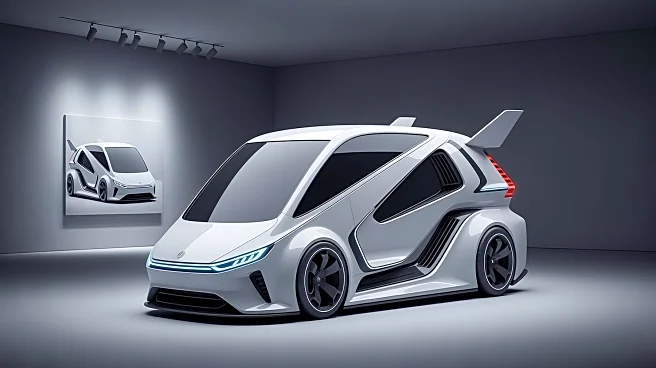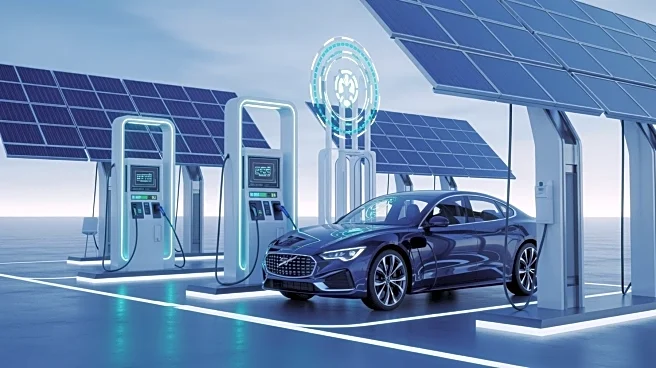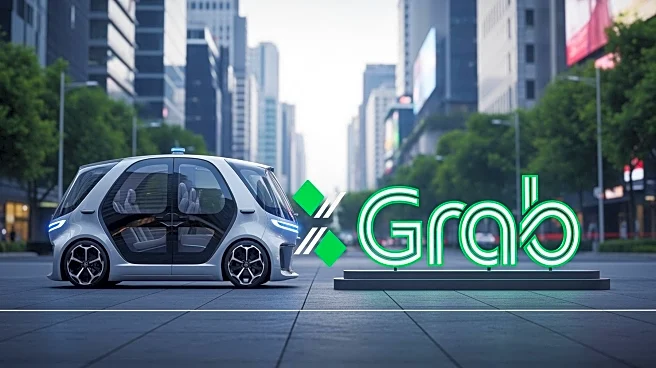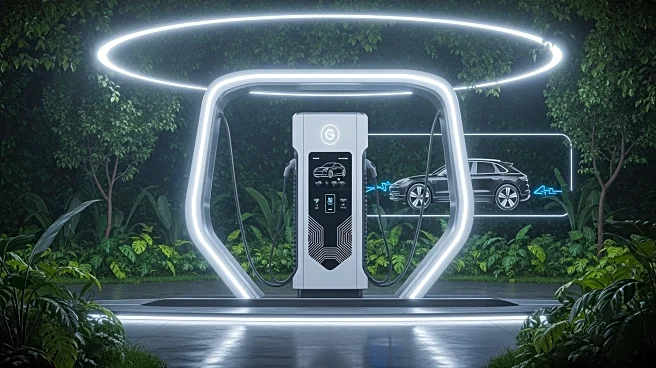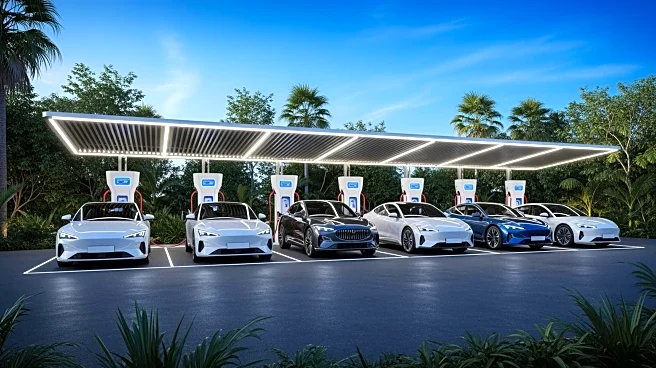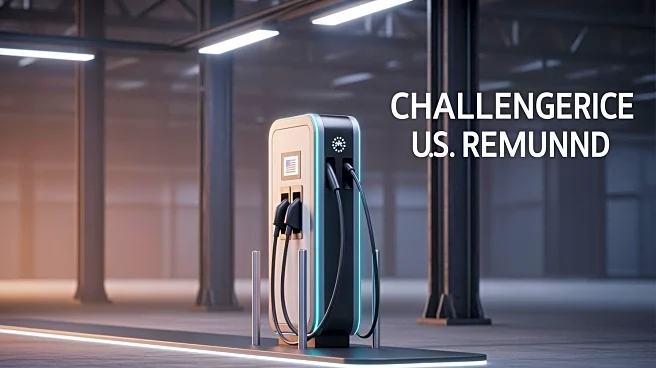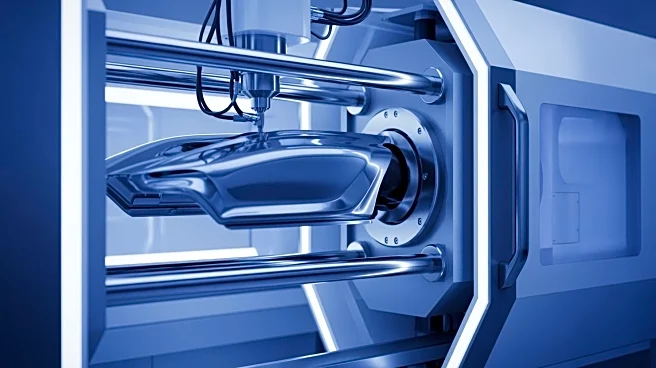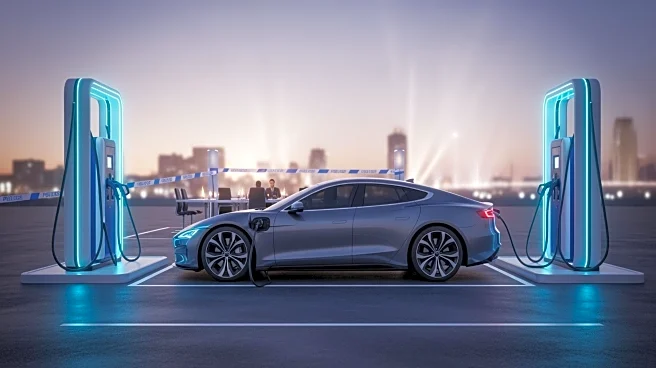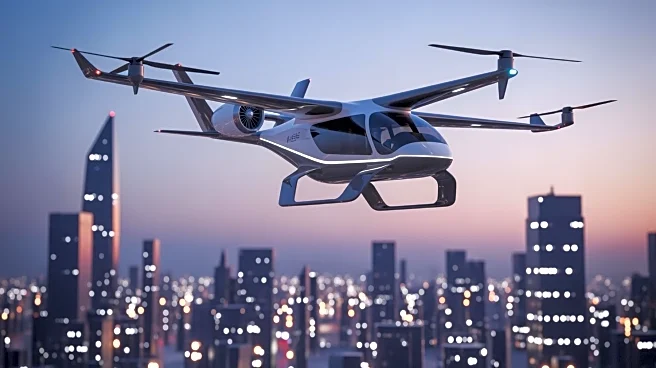What's Happening?
Mercedes-Benz Vans has revealed a sculpture named 'THE BOULDER' as part of its 130 Years of Transportation anniversary celebrations. This sculpture previews the design of the next-generation Sprinter commercial
vehicle. The sculpture, measuring 650 centimeters long, 275 centimeters high, and 250 centimeters wide, is milled from solid material and showcases the future Sprinter's exterior design. The new Sprinter will feature the Mercedes-Benz Operating System (MB.OS), which allows for over-the-air updates, keeping the vehicle's software current. The unveiling also included the presentation of a restored 1899 Benz combination delivery vehicle, noted as the world's oldest roadworthy delivery van.
Why It's Important?
The unveiling of the new Sprinter design is significant for the commercial vehicle industry, as it highlights Mercedes-Benz's commitment to innovation and customer satisfaction. The integration of MB.OS with over-the-air updates represents a shift towards more technologically advanced and adaptable commercial vehicles. This development is likely to enhance operational efficiency for businesses relying on Mercedes-Benz vans, offering them state-of-the-art technology and tailored solutions. The focus on innovative powertrains and connectivity could set new standards in the van segment, potentially influencing competitors and driving further advancements in commercial vehicle technology.
What's Next?
Mercedes-Benz plans to launch the Van Electric Architecture (VAN.EA) for electric models and the Van Combustion Architecture (VAN.CA) for combustion engine vans. The electric model for private customers is expected to launch in 2026, with electric commercial transporters following later. The MB.OS will enable seamless integration of third-party applications, allowing commercial customers to use fleet management and navigation tools directly through the vehicle's head unit. This strategic move could lead to increased adoption of electric vans and further integration of digital services in the commercial vehicle sector.
Beyond the Headlines
The introduction of the new Sprinter design and its advanced features may have broader implications for the automotive industry, particularly in terms of sustainability and digital transformation. The focus on electric models aligns with global trends towards reducing carbon emissions and promoting eco-friendly transportation solutions. Additionally, the integration of digital services and connectivity in commercial vehicles could drive changes in fleet management practices, enhancing efficiency and reducing operational costs for businesses.


